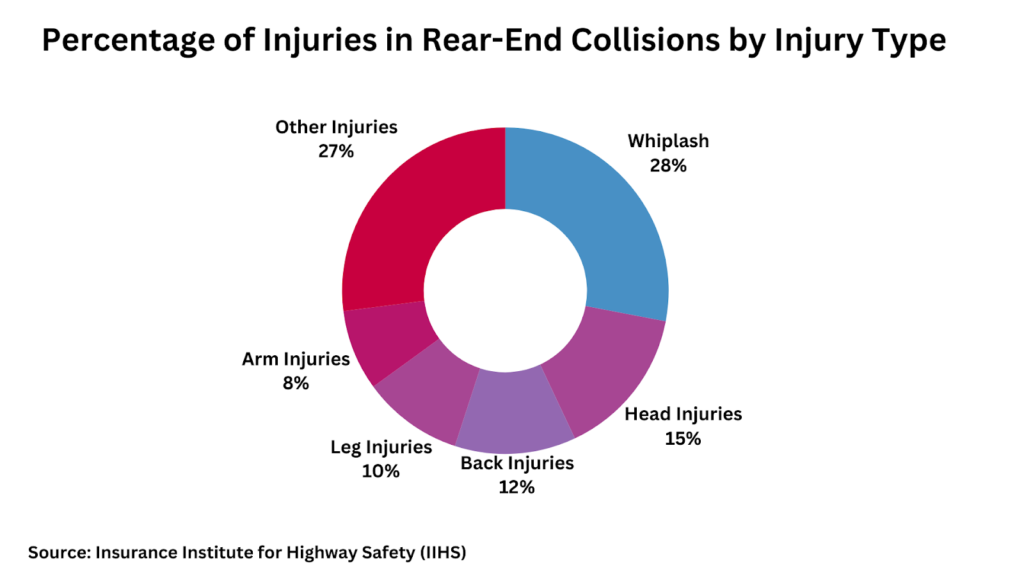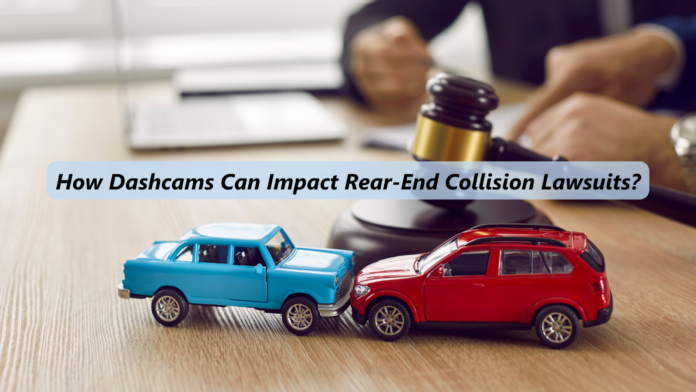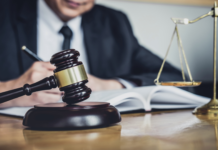Last Updated on July 14, 2024 by Asfa Rasheed
Have you ever been in a rear-end collision and found yourself questioning who was truly at fault? In the aftermath of such accidents, determining liability can be a complex challenge, often leading to contentious legal battles. Annually, the United States witnesses approximately 1.7 million rear-end collisions, resulting in around 1,700 fatalities and injuring an additional 500,000 individuals. Traditionally, there has been a presumption of negligence on the part of the rear driver, based on the principle that drivers should maintain a safe following distance. This presumption arises from the belief that maintaining a safe following distance is a driver’s responsibility.
However, the advent of dashcam technology has disrupted this long-held assumption, providing car accident lawyers with a powerful tool to challenge traditional fault determinations and build compelling cases for their clients. This technological advancement has sparked a shift in litigation strategies, prompting a reevaluation of how rear-end collision lawsuits are approached and resolved.
Table of Contents
The Role of Dashcams in Evidence Collection
Dashcams, or dashboard cameras, are devices mounted on a vehicle’s dashboard or windshield, continuously record video and audio while the car is in motion. These cameras not only capture footage of the road ahead but also store valuable metadata, such as the date, time, GPS location, and speed.
When a rear-end collision occurs, dashcam footage can serve as crucial evidence, providing an unbiased account of the events leading up to the impact. This evidence can be extracted and preserved for legal purposes, often by forensic experts who ensure the integrity and admissibility of the data.
In court, dashcam footage can significantly impact the burden of proof, potentially shifting the presumption of fault or reinforcing a party’s claims. As a result, an increasing number of car accident lawyers are advising their clients to install dashcams and retain any relevant footage in case of an accident.
Whether you find yourself involved in such an incident in bustling metropolises like New York or Los Angeles or in cities like Chicago or Myrtle Beach, the need for legal guidance becomes paramount. A skilled car accident lawyer could give you invaluable assistance. Seeking guidance from a Myrtle Beach car accident lawyer can help you hold the responsible party accountable. So if you or someone you care about was injured in a car accident be sure to consult an experienced lawyer to ensure you receive fair compensation and justice.

Dashcams: A Double-Edged Sword
While dashcams are often perceived as tools that can exonerate the rear driver in a collision, the reality is more nuanced. In some cases, dashcam footage has indeed exonerated the presumed at-fault driver, revealing that the lead vehicle’s sudden and unexpected maneuvers contributed to the accident.
However, in other instances, dashcam evidence has backfired against the owner, capturing behaviors that could be interpreted as negligent or illegal, such as distracted driving, speeding, or failing to yield the right of way.
It’s crucial for drivers and car accident lawyers to understand that dashcam footage can be interpreted differently by opposing legal parties. What may appear as a clear-cut case of innocence to one side could be viewed as evidence of fault by the other, highlighting the importance of skilled legal representation when presenting dashcam evidence in court.
Comparative Fault and Dashcam Evidence
In many states, the concept of comparative fault is applied in rear-end collision cases. This legal principle assigns a percentage of fault to each party involved, which can impact the amount of damages awarded or the ability to recover compensation.
Dashcam footage can play a pivotal role in assessing comparative fault, particularly in cases where both drivers may have contributed to the accident through negligent actions or lapses in judgment. For example, if the lead driver made an abrupt lane change without signaling, and the rear driver was following too closely, the dashcam footage could help apportion fault appropriately between the two parties.
It’s important to note that state-specific nuances in comparative negligence laws can affect how dashcam evidence is weighed and interpreted. An experienced car accident lawyer will be well-versed in these nuances and can effectively leverage dashcam footage to maximize their client’s chances of a favorable outcome.
Insurance Implications of Dashcam Footage
Dashcam footage not only influences legal proceedings but also has significant implications for insurance claims related to rear-end collisions. Insurance companies routinely use dashcam footage in their claim investigations, as it provides valuable insights into the circumstances surrounding the accident.
If the dashcam footage clearly shows that the insured driver was not at fault, it can expedite the claim approval process and potentially result in lower premiums or deductibles. Conversely, if the footage reveals negligence or unlawful behavior on the part of the insured, it could lead to claim denials or premium increases.
For drivers involved in a rear-end collision, it’s essential to consult with a car accident lawyer before submitting dashcam footage to insurance companies. An experienced attorney can help ensure that the footage is presented in a way that maximizes the chances of a favorable outcome while minimizing the risk of unintended consequences.
Privacy Concerns and Legal Restrictions
While dashcams offer substantial benefits in rear-end collision cases, their use is not without legal and privacy considerations. Some states have specific laws governing the use of dashcams, including restrictions on recording audio without consent and limitations on where the cameras can be mounted.
Additionally, there are concerns about the potential violation of privacy rights, particularly if the dashcam footage captures individuals in private settings or records conversations without their knowledge or consent.
To ensure that dashcam footage is legally obtained and usable in court, drivers must familiarize themselves with state-specific dashcam regulations and consult with a car accident lawyer if necessary. Failure to comply with these laws could render the footage inadmissible or even lead to legal consequences for the dashcam owner.
Preparing for Litigation: Tips for Dashcam Users
If you’re considering installing a dashcam to protect yourself in the event of a rear-end collision or other accident, there are several best practices to keep in mind:
- Choose a high-quality dashcam with features like loop recording, night vision, and multiple camera angles to capture comprehensive footage.
- Regularly maintain and back up your dashcam footage, ensuring that important files are not overwritten or lost in the event of an accident.
- Familiarize yourself with your state’s dashcam laws and privacy regulations to avoid any legal pitfalls.
- Consult with a car accident lawyer to understand how to properly handle and present dashcam evidence in a legal setting.
By taking these proactive steps, you can increase the chances of your dashcam footage being admissible and impactful in a rear-end collision lawsuit or insurance claim.
Final Thoughts
As technology continues to evolve, the role of dashcams in rear-end collision litigation is likely to expand. Emerging technologies like advanced driver-assistance systems (ADAS) and vehicle-to-vehicle (V2V) communication could provide even more detailed data and insights into accident scenarios.
Additionally, there may be legislative changes to accommodate the increasing prevalence of dashcams and other digital evidence in legal proceedings. Courts and lawmakers may need to establish clearer guidelines for the admissibility and weight of such evidence, ensuring a fair and consistent approach across jurisdictions.
Frequently Asked Questions
Yes, dashcam footage can play a critical role in rear-end collision lawsuits by providing clear, objective evidence of the events leading up to the crash. This footage can help establish fault, contributing to the decisive evidence needed to resolve the case. However, the impact of the footage depends on its quality, the angle of the camera, and the specific circumstances of the collision.
Answer: Dashcam footage is generally admissible in court, provided it meets certain criteria, such as relevance to the case, authenticity, and not being overly prejudicial. However, admissibility can vary by jurisdiction, and specific legal standards and procedures for submitting dashcam footage as evidence might apply.
When using a dashcam for legal protection in rear-end collisions, consider the camera’s quality to ensure it captures clear footage in various conditions. Regularly maintain and check the dashcam to ensure it’s functioning correctly. Also, familiarize yourself with local laws regarding dashcam use, including any restrictions on recording conversations without consent, to ensure the footage is legally admissible.



























